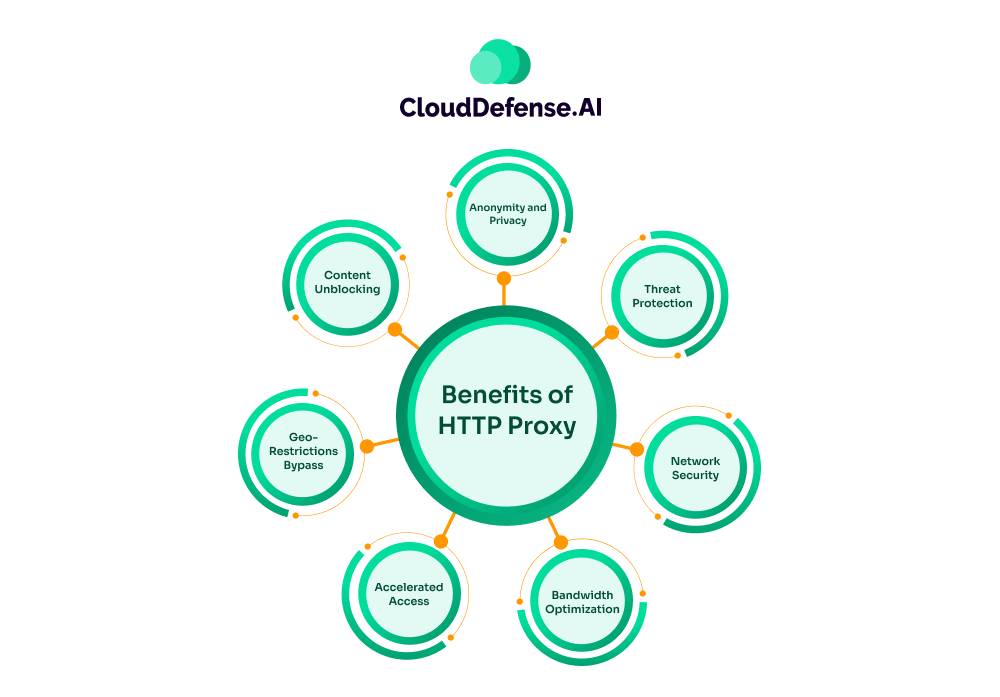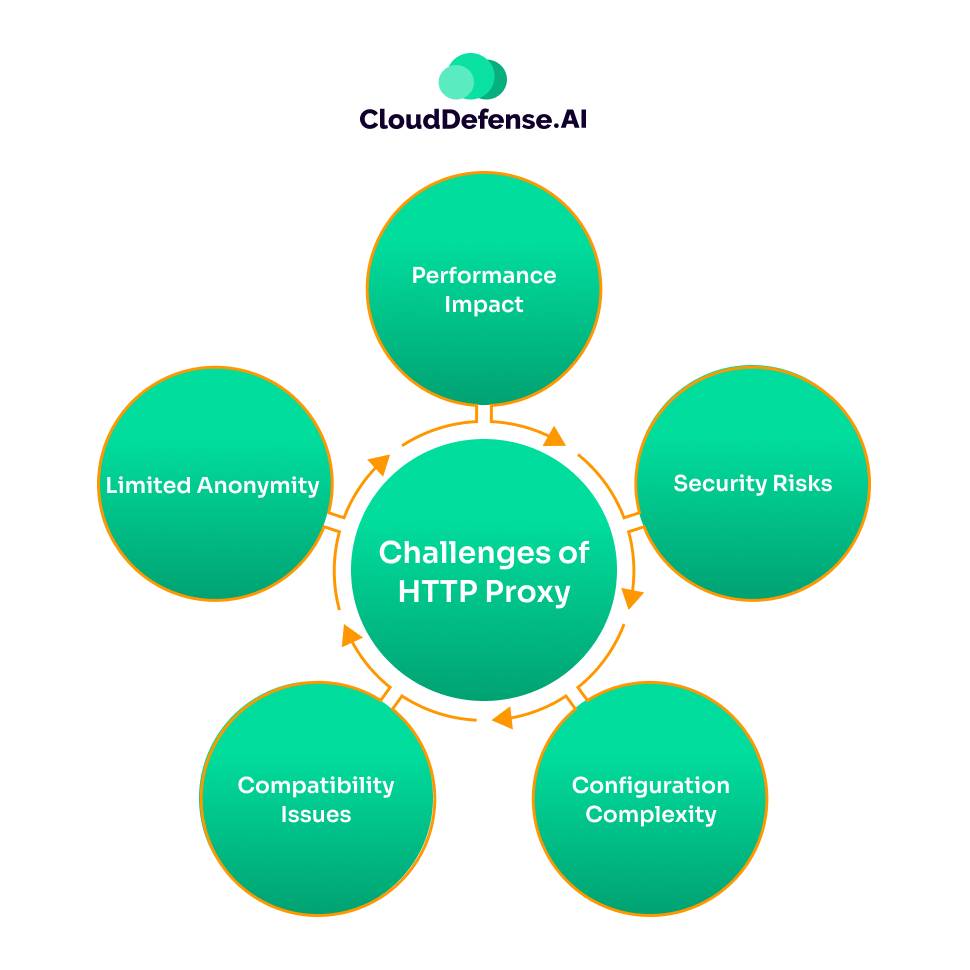What is HTTP?
Hypertext Transfer Protocol, or HTTP, is an application-level protocol used for transferring files and data on the World Wide Web. It allows communication between web browsers and web servers, allowing browsers to send requests and servers to provide responses.
HTTP operates over the Transmission Control Protocol/Internet Protocol (TCP/IP) and Google’s QUIC protocol. The protocol was proposed by Tim Berners-Lee in 1989 and has evolved from its original stateless version (HTTP/1.0) to the more sophisticated HTTP/3.
While HTTP itself lacks built-in security, HTTPS incorporates encryption via Secure Sockets Layer to secure the communication between browsers and servers.
What is Proxy?
A proxy is an entity authorized to perform actions on behalf of another. In the context of the online world, a proxy server fulfills this role by acting as an intermediary between a user and the internet. When accessing the internet, instead of connecting directly to websites, the user’s browser connects to the proxy server.
The proxy then communicates with the desired websites on behalf of the user, retrieves the requested information, and forwards it back to the user’s browser. This setup allows the proxy to use its own IP address, masking the user’s IP and enhancing privacy and security by preventing direct access to the user’s network from the outside world.
How does HTTP Proxy Work?
An HTTP proxy server operates as a intermediary, acting as a bridge between a user or client device and the internet. When a user requests a web page, the request is directed to the proxy server instead of going directly to the target website. This strategic placement allows the proxy to scrutinize incoming and outgoing traffic, providing multiple layers of protection.
The Proxy Process:
- Request Interception: When a user initiates a web request, the HTTP client sends it to the proxy server. This request contains details such as the desired website, the user’s IP address, and other relevant information.
- Traffic Analysis: The proxy server examines the incoming request. It can inspect the request headers, URL, and even the content itself to identify potential threats. This analysis helps in detecting malicious code, phishing attempts, or unauthorized access.
- Content Filtering: Based on predefined rules and security policies, the proxy can filter content. It can block access to harmful websites, prevent downloads of suspicious files, and restrict certain types of traffic. This granular control empowers organizations to protect their network and data.
- Request Forwarding: Once the proxy server determines that the request is safe, it forwards it to the target website. The proxy acts as a representative of the client, masking the user’s IP address and potentially improving network performance through caching.
- Response Handling: After the target website processes the request and generates a response, the proxy server receives it. Again, the proxy scrutinizes the response for malicious content or anomalies before forwarding it to the client.
- Logging and Reporting: To aid in threat detection and incident response, the proxy server maintains detailed logs of all web traffic. These logs can be analyzed to identify patterns, detect security breaches, and track user activity.
Benefits of HTTP Proxy

HTTP proxy serve as versatile tools offering a range of advantages for both individual users and organizations. By acting as intermediaries between devices and the internet, they provide several key benefits:
- Anonymity and Privacy: Proxies mask a user’s real IP address, protecting personal information from being exposed to online trackers and malicious actors.
- Threat Protection: By filtering web traffic, proxies can block access to harmful websites, preventing the spread of malware, ransomware, and phishing attacks.
- Network Security: In corporate environments, proxies can enforce security policies, restricting access to certain websites or content, and protecting sensitive data from unauthorized access.
- Bandwidth Optimization: Proxies can significantly reduce bandwidth consumption by caching frequently accessed web pages and files, decreasing download times and network load.
- Accelerated Access: By storing copies of popular content, proxies can deliver web pages faster, enhancing user experience and improving website performance.
- Geo-Restrictions Bypass: Proxies allow users to access websites and content that may be blocked based on geographic location.
- Content Unblocking: In restricted environments, proxies can be used to circumvent censorship and access blocked websites or services.
Challenges of HTTP Proxy

While HTTP proxy offers numerous benefits, they also come with certain challenges and limitations:
Performance Impact
Introducing a proxy server into the network can introduce latency, as requests must be routed through the proxy before reaching the destination. This can slow down web page loading times and overall internet speed.
Security Risks
While proxies can enhance security, they can also become targets for attacks. If not properly configured or maintained, proxies can be exploited by malicious actors to compromise network security.
Configuration Complexity
Implementing and managing HTTP proxy requires technical expertise. Proper configuration of rules, authentication, and performance optimization can be complex and time-consuming.
Compatibility Issues
Some applications or websites may not function correctly with a proxy server, leading to compatibility problems and user frustration.
Cost
Deploying and maintaining an HTTP proxy server can involve hardware, software, and personnel costs, which may be significant for organizations with large-scale requirements.
Limited Anonymity
While HTTP proxy can mask your IP address, they do not encrypt your traffic. This means your data can still be intercepted and viewed by third parties, limiting the level of anonymity provided.
Common Use Cases of HTTP Proxy
HTTP proxy serve a diverse range of purposes, catering to both individual and organizational needs. Here are some of the most common use cases:
Data Acquisition and Management
- Web Scraping: Extracting data from websites for personal projects, market research, or academic studies.
- Data Gathering: Collecting information for business intelligence, competitor analysis, or trend monitoring.
Access and Circumvention
- Geo-Restriction Bypass: Accessing content that is restricted based on geographic location, such as streaming services or news outlets.
- Content Filtering: Blocking or allowing access to specific websites or content based on predefined rules.
- Firewall Bypass: Circumventing network restrictions to access blocked resources, though this is often discouraged due to potential legal and ethical implications.
Network Optimization and Security
- Load Balancing: Distributing incoming traffic across multiple servers to improve performance and reliability.
- Network Security: Protecting against threats by filtering traffic, blocking malicious websites, and preventing unauthorized access.
- Parental Controls: Filtering content to protect children from inappropriate material online.
Other Applications
- Testing and Debugging: Simulating different network conditions or user environments for application development and testing.
- Anonymity: Masking a user’s IP address to protect privacy and avoid online tracking.
- Bot Management: Managing bot traffic to prevent abuse and ensure fair access to websites.
These are just some of the many ways HTTP proxies are utilized. The specific use case often depends on the individual or organization’s needs and the type of proxy employed (e.g., residential, data center, or mobile)
Final Words
HTTP proxies are versatile tools offering a wide range of benefits, from enhancing security and privacy to improving performance and expanding internet access. While they present some challenges, their value in today’s digital landscape is undeniable. By understanding how proxies work and their potential applications, individuals and organizations can make informed decisions about their use.







